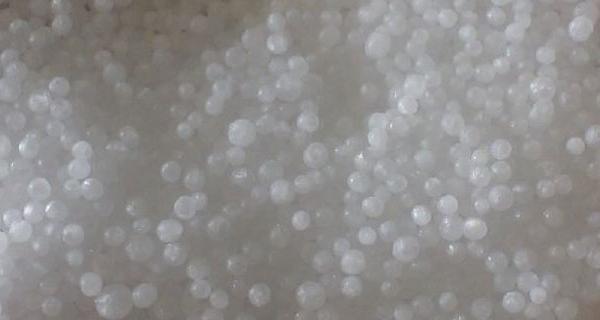How to fertilize flowers? What taboos are there in flower fertilization?
Many people grow flowers. Today, Xiaobian will share them with you.
Flowers are better fertilized:
(1) Classified fertilization. Foliage flowers should apply more nitrogen fertilizer to make the leaves fresh and crisp green; flower viewing flowers should apply more phosphorus and potassium fertilizer to make the plants bloom early and bear fruit early; bulb flowers should apply more potassium fertilizer to enrich the bulbs.
(2) Timely fertilization. Fertilization is appropriate when flower leaf color becomes pale and growth slows down. Different fertilizers and different amounts are applied according to different growth stages of flowers. For example, nitrogen fertilizer is mainly applied in seedling stage, and thin fertilizer is applied frequently to promote rapid and healthy growth of seedlings; after seedling, fertilizer concentration can be appropriately increased, and phosphorus and potassium fertilizer can be increased.
(3) Base fertilizer and topdressing. Base fertilizer is mainly organic fertilizer, which can improve soil structure and physical and chemical properties and improve soil fertility. Topdressing is mainly chemical fertilizer, which has the characteristics of more nutrients, fast fertilizer efficiency and large fertilizer intensity. It is a necessary supplement for basal fertilizer.
(4) N, P and K fertilizer were applied. For example, partial application of nitrogen fertilizer is easy to cause excessive growth of branches and leaves, delay flowering or no flowering; partial application of phosphorus fertilizer will inhibit the absorption of nitrogen and potassium, make plant growth poor, and easily cause iron deficiency and zinc deficiency; partial application of potassium fertilizer will inhibit the nutritional growth of plants and cause magnesium deficiency.
(5) Apply foliar fertilizer as appropriate. In vigorous growth period or lack of trace elements, foliar fertilizer can timely supplement the deficiency of nutrients absorbed by roots of flowers. However, foliar topdressing should strictly control the concentration to avoid leaves.
(6) Fertilize when the soil is wet. Fertilization in soil drought can easily cause physiological water loss and wither of flower branches and leaves, which can lead to plant death in serious cases. On the contrary, fertilization in rainy days, due to high soil moisture content, poor ability to absorb fertilizer and keep fertilizer, easy to be washed away by rain, and will cause excessive growth of plant branches and leaves.
(7) appropriate amount of soil after fertilization. Many people are used to applying fertilizer to the topsoil, which not only makes it easy to volatilize fertilizer loss, but also causes root system, especially in high temperature and dry weather, volatilizing faster and damaging roots more seriously. Therefore, after fertilization, appropriate amount of soil should be covered to prevent fertilizer loss and improve fertilizer efficiency.
Taboo of flower fertilization:
(1) Fertilize new plants. There are many wounds in the roots of newly planted plants. If they are stimulated by the outside world, the wounds are not easy to heal, which will cause rotten roots and even lead to plant death.
(2) Fertilize the weak plants. Weak plant growth potential weak, poor photosynthesis, slow metabolism, low fertilizer absorption capacity, if random fertilization, but easy to cause fertilizer damage.
(3) Fertilization during flowering. Fertilization in flowering period will promote excessive vegetative growth of plants, which is easy to cause excessive growth, resulting in bud and flower drop.
(4) Fertilization during dormancy. Flowers stop or slow down growth during dormancy. If fertilizer is applied, dormancy will be broken, which will promote plant growth and affect flowering in the coming year.
(5) Fertilization under roots. When planting flowers, the roots of the plants should not be placed directly on the base fertilizer, but a layer of soil should be added to the fertilizer, otherwise it is not only unfavorable for the fertilizer to be fully absorbed and utilized, but also easy to damage the roots. In addition, topdressing should be based on plant growth conditions, hole application in the appropriate place from the root, to facilitate the absorption of roots.
(6) Fertilization. Organic fertilizer applied to flowers without sufficient decomposition is not only easy to spread diseases and insect pests, but also the organic fertilizer will ferment and heat in the process of decomposition, and the roots of plants will grow.
(7) Apply heavy fertilizer. To fertilize flowers, we must strictly control the amount of fertilizer, avoid excessive concentration or excessive dosage, otherwise it will cause the root system of the plant, serious death, generally should be done "thin fertilizer and frequent application".
Flower fertilization methods and flower fertilization taboos and share here, I hope this article is helpful to everyone, I wish you good luck.
Related
- What if the leaves of potted flowers turn yellow?
- Florescence Control of several Flowers
- Anti-freezing technology and post-freezing nursing technology of flowers
- What is the classification of flowers? What are the common methods of flower classification?
- Prevention and control of alkali and acid damage of flowers in courtyard
- Technology of Anti-freezing and restoring growth of Flower seedlings in greenhouse and greenhouse
- How does flower fertilization not hurt the root? Fertilization technology of flowers
- Key points of disinfection in flower greenhouse
- Several pesticides that are banned or used cautiously in flowers
- How to fertilize the flowers that watch the leaves?



